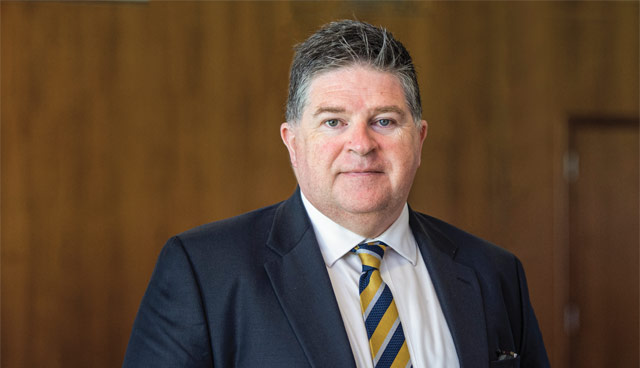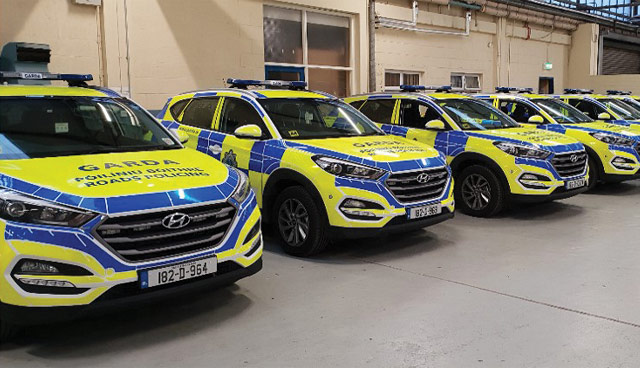Building a smarter police force

Head of Digital Services and Innovation for An Garda Síochána, Tim Willoughby, outlines how mobile policing is enabling a faster and more interactive service, while easing the oversight process.
“Civilianisation is progressing at pace in An Garda Síochána. We used to have two superintendents in ICT, one in operations and the other telecoms. As part of the civilianisation of An Garda Siochána both have been moved into operational policing roles, so, along with my innovation role, I now cover the other roles,” Willoughby explains, detailing his role at the forefront of the push to digitalise and modernise policing in Ireland.
While the challenge was one that arose from technological need, the approach Willoughby piloted was one with a focus on the organisation and its frontline. “New methods have to be adopted to make change. It’s not good enough to just talk about it,” he explains. “The first thing was speeding up how we work. We needed feedback loops and frontline engagement. The first thing I did with David Sheehan, who is now Assistant Commissioner, was to take four members of the frontline Garda team one day a week, every week, for the first six months. They need to own the service. It’s not good developing something for them and the backend people telling them what they’re going to get; they need to engage. Those four are turning into 70 Gardaí. Each division is producing two champions and we’re going to introduce them to what we’re doing and what the rest of Europe is doing so they can see we’re on the right trajectory.”
It was in Europe that Willoughby learned an important personnel lesson. Attending a hackathon in Sweden led to him understand the importance of UX (user experience design). At a time when Gardaí had no UX experts employed, Swedish forces had four. Following the hiring of three UX experts, Willoughby says that they are now “spending their time in the frontline, getting the experience and getting the technology onto the side of the road using real situations”.
“If you want to change an organisation the size of An Garda Síochána, you start with making changes with the 14,000 frontline where even a small change will make a massive difference at the backend, whereas, with 200 senior people will only give you incremental change. Our challenge in the past has been enterprise resource planning, big systems and the senior people knowing what the frontline is doing, but now the focus is on giving the frontline the tools for the job and a by-product of that is that the senior people will get the dashboards to see what’s happening.”
Willoughby portrays a digital journey that was enabled as much by his “getting out of the way” as it was by his leadership: “Part of this is the power structure in the organisation. Looking at where the power sits and how you manage your own power; it has to flow and be enabled. You have to step out of the way and let things happen. If everything has to go through you, then nothing will happen.
“As people in government, we have to be responsible. There is a democratic duty to do things and fear trumps getting actions done. Moving into an agile world, we need to think and engage differently. We came up with the slogan, ‘from failsafe to safe fail’. So, if something’s not working, pull the plug. Move on rather than trying to continuously invest in something that’s not working.”
One small change in working methods encapsulated the attempts to be constantly progressing for Willoughby: “We went away from proof of concept, where you’re not really proving anything and went to minimum viable product. That means you’re putting the bones of the thing together and doing the least amount of work possible to show people that it works. Proofs of concept, typically you throw it away and start back from where you were, but minimum viable products mean you are moving and starting a trajectory. It was a mindset and language change to implement that.”
Reform in An Garda Síochána, digital or otherwise, has been happening under the umbrella of the report A Policing Service for the Future, which carried with it 10 principles and 50 key recommendations, the last of the principles being that the force must be “adaptive, innovative and cost effective”. Recommendations under that principle include the complete overhaul of the digital aspect of the force and the wearing of body cameras by officers. The plan also mandates the acquisition of 2,000 devices by the force before the end of 2019.
“The strategy has endless mentions of where mobile fits in and sets out very clearly the direction we need to go in,” Willoughby says. “Our ICT strategy sets out a vision for mobility and it again puts the Garda at the centre. It’s about the Garda being better connected to have whatever they need and that’s something that’s different for the organisation. If we’re giving a tool to a Garda, a rule we have is that everything that they have to do can be ‘Once and Done’ and finished. There’s no paperwork afterwards, the members don’t have to back to the station, if they’re doing something on a mobile app.”

“If you want to change an organisation the size of An Garda Síochána, you start with making changes with the 14,000 frontline where even a small change will make a massive difference at the backend, whereas, with 200 senior people will only give you incremental change.”
Willoughby then moves on to the technicalities of the activities Gardaí can now undertake on the app: “Looking at frontline engagement, we’ve given them the ability to scan things. The way we have written apps is that each app has micro capabilities. For example, we have a service for authentication, so if we decide in the future that we want to change that process, we only have one micro capability to change and all the other apps use that. We have a passport App that not only scans the Machine Readable Zone on the passport, but also unlocks the biometric chip, reads the data and can validate the passport we have in our hands.
“A year ago, we had 50 small stations that weren’t yet networked with traditional broadband, because we have small stations in places that haven’t yet been covered by the National Broadband Plan. What we have been able to do is use smart technology to put boosted internet signal into those places and use the power of the mobile device to connect the member to the back end. By the end of the year, all of the sites will have connectivity. We have also just closed a tender where the speed gun will work with the app. When it gets a hit, it will automatically connect to the phone, using Bluetooth, and the phone will present the full details of the car and the speed. We have pushed our portal into an app now which means that Gardaí don’t have to go into their stations in the morning and will still receive bulletins. We have developed a series of smart cars and what we’ve done is put WiFi in the car with a dual sim router, so wherever the car is in the country, it’s connected, and the range is within 150 metres of the car. “
Change is afoot in An Garda Síochána and Willoughby sounds confident and assured as he concludes by looking to the future: “We want 1,000 devices to go out per month next year. We are building dashboards for senior people to see what’s happening on a daily basis. We are changing the way we do things.”





